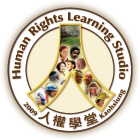
|
 The Human Rights-based Approach (1)
The Human Rights-based Approach (1)
Since 1988, UNICEF has been a leading architect and proponent of the human right-based approach to programming to fulfill the rights of women and children under the convention and CEDAW. The organization's country programmes are guided by human rights principles applied in all phases and sectors.
The human rights-based approach is derived from principles that underlie convention, accountability, universality and non-discrimination, indivisibility and participation. It is firmly embedded in the work of the United Nations, which in 2003 passed a statement of "Common Understanding" of a human rights-based approach in development cooperation. Under this paradigm an underlying aim of all UN programmes is to advance the realization of human rights as laid down in the universal declaration of human rights and other major human rights instruments.
Human rights are innate to all people, irrespective of their ethnic origin, beliefs and practices, geographic location, gender or income level. Yet despite robust international and national legal frameworks in support of human rights, the social groups that have traditionally suffered from marginalization and discrimination within their countries and societies are still consistently the most at risk of having their rights violated or unfulfilled.
A human rights-based approach specifically targets the most marginalized groups and the most vulnerable members of these groups which are often women and children – in the countries and communities with the greatest need. The approach has implications for programme budgets and planning, as it is often more costly to reach marginalized group or people or urban slums than in more mainstream areas. Immunization provides an example, where unit costs of vaccinating infants in rural areas are far higher than for their counterparts living in cities.
Under human rights-based approach to immunization, an alternative measure for determining programme priorities and allocating resources may be employed. Using the number of deaths prevented as a determining factor in resource allocation immediately changes the cost-benefit equation, since poorer or more marginalized groups are likely to benefit most from the extension of essential services.
Innovative solutions are often required to fulfill the rights of marginalized and disadvantaged children and families.
By Alula Berhe Kidani
(2011-9-17/SudanVisionDaily)
|





